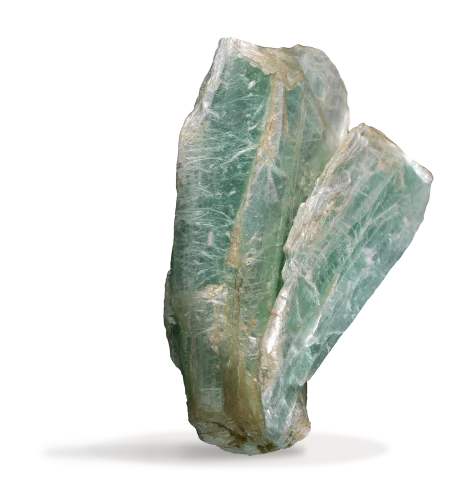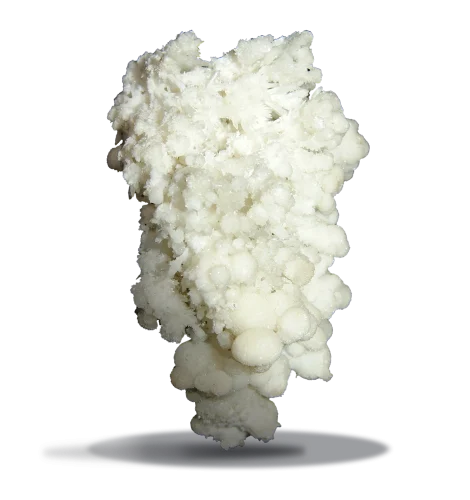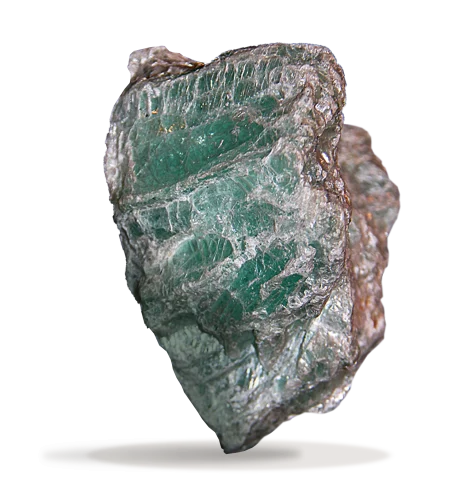

“A Cornerstone of Global Industries”
Talc, a versatile mineral composed of hydrated magnesium silicate, plays a critical role in various global industries thanks to its unique properties, including softness, chemical inertness, thermal resistance, and excellent lubricating qualities. Its applications span across numerous sectors, making it an indispensable resource in modern industrial processes.


“The Talc Mineral”
Talc, a naturally occurring mineral composed primarily of magnesium, silicon, and oxygen, is recognized for its unique chemical and physical properties. Its chemical formula, Mg₃Si₄O₁₀(OH)₂, defines its composition, featuring a layered structure that contributes to its softness and greasy feel. Talc is the softest mineral on the Mohs scale of hardness, with a rating of 1, making it easily scratched by a fingernail. It has a pearly to greasy luster, excellent thermal stability, and hydrophobic surface chemistry. These properties, combined with its ability to resist heat, electricity, and acids, make talc a versatile mineral for a range of applications. Talc occurs in a variety of colors, from white to green, depending on its purity and the presence of trace impurities

“The Talc Mineral”
Talc, a naturally occurring mineral composed primarily of magnesium, silicon, and oxygen, is recognized for its unique chemical and physical properties. Its chemical formula, Mg₃Si₄O₁₀(OH)₂, defines its composition, featuring a layered structure that contributes to its softness and greasy feel. Talc is the softest mineral on the Mohs scale of hardness, with a rating of 1, making it easily scratched by a fingernail. It has a pearly to greasy luster, excellent thermal stability, and hydrophobic surface chemistry. These properties, combined with its ability to resist heat, electricity, and acids, make talc a versatile mineral for a range of applications. Talc occurs in a variety of colors, from white to green, depending on its purity and the presence of trace impurities



Geologically, talc forms primarily through the metamorphism of ultramafic rocks and carbonate sediments, typically in the presence of water and carbon dioxide. This process often occurs in regions with intense tectonic activity, leading to talc deposits associated with serpentinites and dolomitic marbles. Key industrial properties of talc, such as its whiteness, particle size, and platy morphology, are meticulously refined to meet specific demands in industries like cosmetics, ceramics, paints, plastics, and paper. Its smoothness, chemical inertness, and ability to absorb oils make it indispensable in cosmetics, while its thermal resistance and opacity are valued in ceramics and paints. The diversity of talc's applications underscores its economic and functional significance in industrial settings.

Pharmaceuticals and Food
Used as a glidant in tablet production and as a safe additive in food processing.

Ceramics
It serves as a flux, reducing firing temperatures and enhancing the strength of ceramic products.

Paints and Coatings
Talc contributes to durability, weather resistance, and adhesion properties in paints and coatings.

Paper Production
As a filler and coating agent, talc improves paper's smoothness, opacity, and printability.

Plastics and Polymers:
Talc enhances stiffness, heat resistance, and processing efficiency in polymers, especially in automotive and packaging industries.

Cosmetics and Personal Care
Talc is a primary ingredient in powders, foundations, and other personal care products, providing a silky texture and moisture-absorbing capabilities.
Description
Global Market
The market has shown steady growth in recent years, with key drivers being the increasing demand for lightweight and durable materials. The talc market size will grow from $9.57 billion in 2023 to $10.52 billion in 2024 at a compound annual growth rate (CARGR) of 10.0%. The grow in the historic period can be attributed to cosmetics and personal care industry, plastic and polymers manufacturing, paper and pulp industry, ceramics and paints, pharmaceuticals.
The talc market size is expected to see strong growth in the next few years. It will grow to $14.91 billion in 2028 at a compound annual growth rate (CAGR) of 9.1%. The Asia-Pacific region is expected to maintain the largest share of the market due to industrial growth in China, India, and other emerging economies.
Key industry segments contributing to this market include:
- Plastics and Polymers: Talc consumption is expected to grow in this sector, driven by increasing demand for lightweight and strong materials in automotive and packaging.
- Cosmetics: The demand for talc in personal care products like powders, deodorants, and foundations remains significant.
- Paper and Coatings: Talc is used as a filler for paper, with continued growth in demand from the global packaging industry.
The talc market remains robust, with major producers such as China, India, and the U.S. playing key roles in the global supply chain. While raw talc ore remains the primary export for many producing countries, high-grade talc for niche applications in cosmetics and pharmaceuticals offers a higher financial return.


